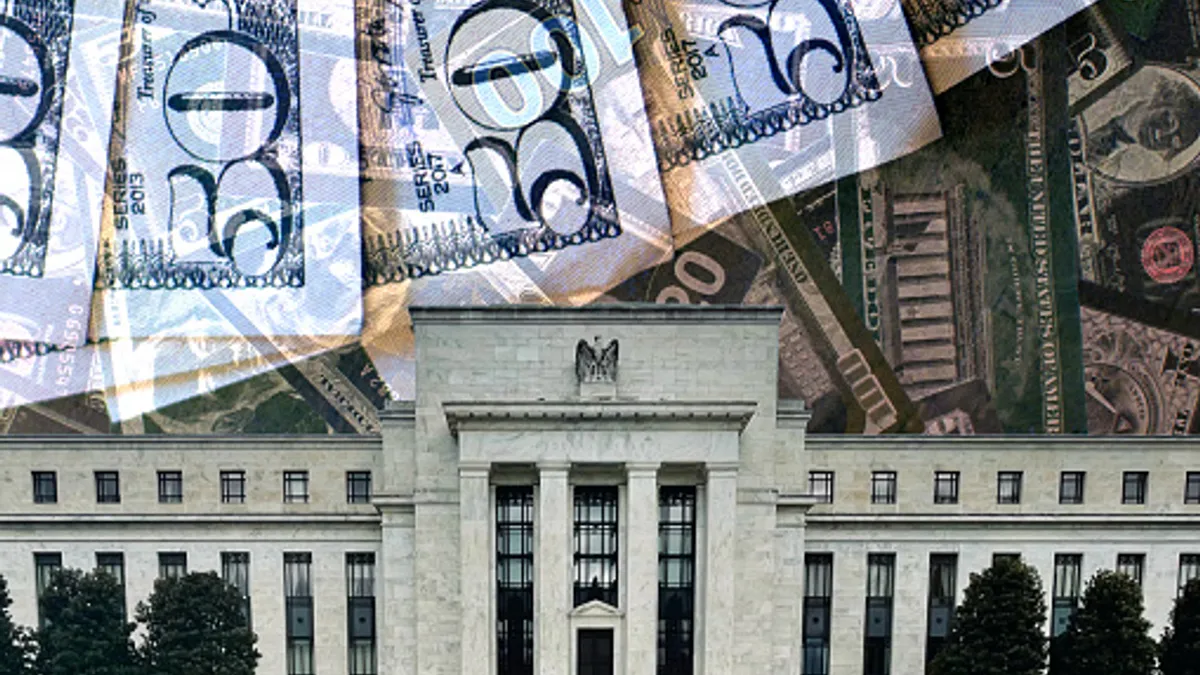Dive Brief:
- Inflation edged up in January as falling prices for apparel and used vehicles failed to offset gains in shelter, transportation and other services costs, prompting traders to postpone beyond May their forecast for a cut in the Federal Reserve’s main interest rate from a 23-year high.
- The core consumer price index, which excludes volatile food and energy prices, rose 0.4% last month compared with 0.3% in December, and increased 3.9% on an annual basis, the same as the prior month. A 0.6% gain in shelter costs in January fueled most of the increase in core inflation, the Bureau of Labor Statistics said.
- The data reveal “hotter than expected inflation,” Julia Coronado, president of MacroPolicy Perspectives, said on X, formerly Twitter. “Housing continues to be a conundrum, with OER [owners’ equivalent rent] firming and rent cooling noticeably — leading indicators suggest both should cool but it is taking its sweet time to show up!” she said.
Dive Insight:
Responding to the inflation data, traders in interest rate futures slashed from 52% to 34% the probability that the Fed will trim the federal funds rate from its current peak level on May 1, according to the CME FedWatch Tool.
Traders now see 52% odds that the central bank on June 12 will make a quarter-point cut to the benchmark interest rate. The Fed currently keeps the main rate at a range between 5.25% and 5.50%.
Members of the central bank’s Federal Open Market Committee have indicated that they have finished raising borrowing costs but said a steady decline in price pressures must precede any easing in policy.
“Almost everyone on the committee is in favor of moving rates down this year,” Fed Chair Jerome Powell said at a Jan. 31 press conference. “But the timing of that is going to be linked to our gaining confidence that inflation is on a sustainable path down to [the Fed’s inflation goal of] 2%,” he said.
Consumer expectations for inflation suggest that the central bank may need more time than markets anticipate to gain confidence that price pressures are steadily falling, according to Douglas Holtz-Eakin, president of the American Action Forum.
Consumers expect 3% inflation in a year, according to the median result of a January survey by the New York Fed released Tuesday, matching December’s result.
Current one-year inflation expectations, although down from 6.8% in June 2022, “suggest that the Fed remain restrictive for an additional period as the 2% threshold is met,” Holtz-Eakin said in a blog post on Tuesday.
Persistent inflation in shelter costs, which are slower to rise and to fall than other categories of goods and services, support the view that borrowing costs may remain higher than markets forecast.
Shelter prices increased 6% during the 12 months through January. Powell has repeatedly said a sustained decline in this category is essential for meeting the 2% inflation target.
Food prices rose 0.4% during January, while transportation and medical care increased 1% and 0.7%, respectively.
Not all of the inflation data is gloomy: Energy prices declined 0.9% last month and the price of used cars and trucks fell 3.4%.















